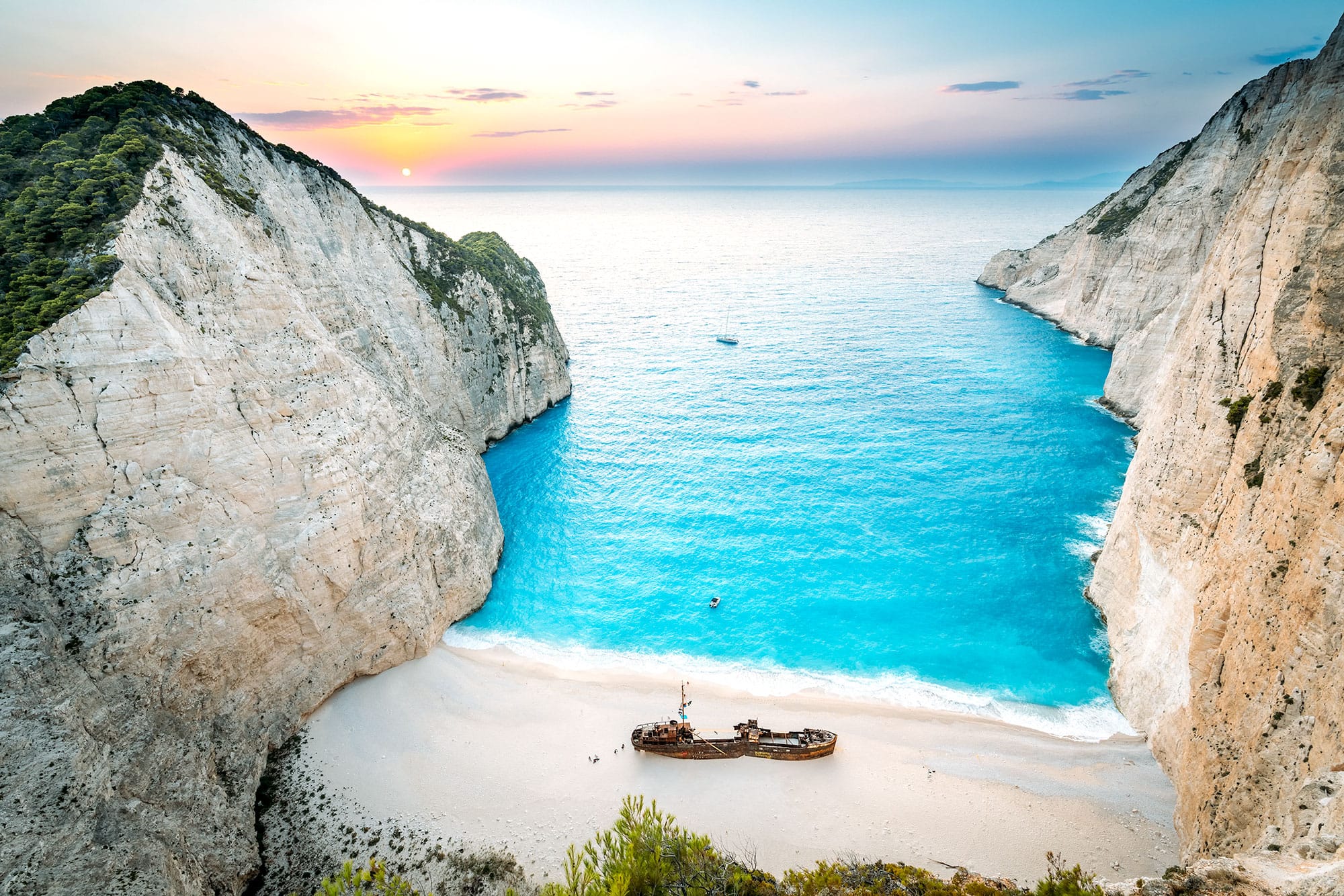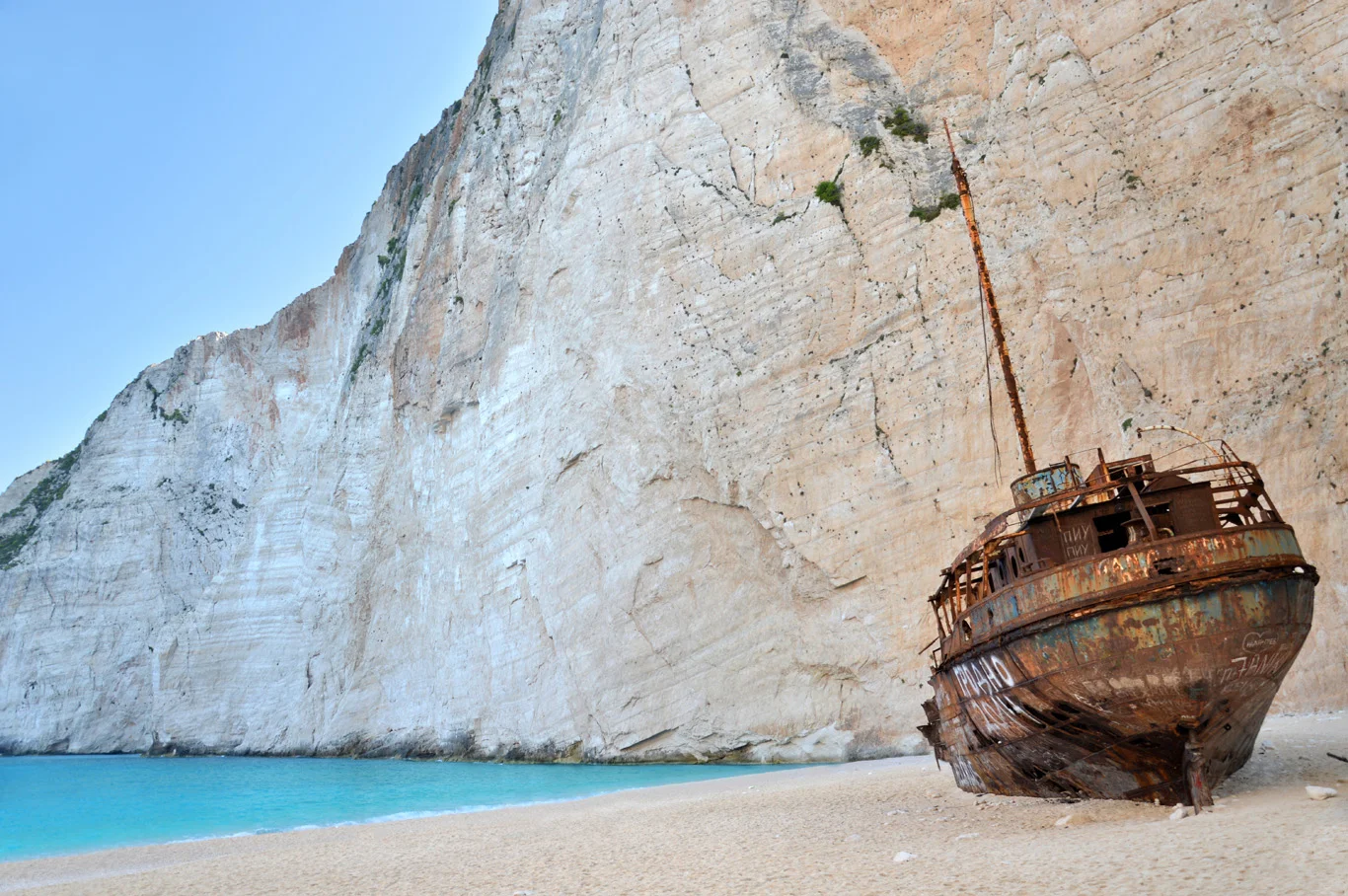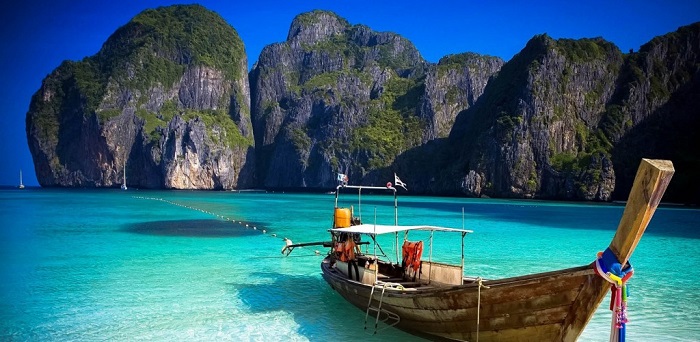
Navagio Beach (Shipwreck Beach), Zakynthos: An Icon Etched in Limestone and Time

Navagio Beach, often called Shipwreck Beach or Smugglers’ Cove, is arguably the most iconic and photographed beach in Greece, and perhaps even the world. Nestled on the coast of Zakynthos, one of the Ionian Islands, its dramatic beauty is a symphony of towering limestone cliffs, turquoise waters, and the rusting skeleton of a shipwreck, all harmonizing to create a scene that feels both surreal and undeniably captivating. More than just a pretty picture, Navagio Beach is a destination steeped in history, mystery, and the raw, untamed power of nature. This article delves into the allure of this remarkable location, exploring its geological origins, the story of the shipwreck, the unique ecosystem it supports, and the practicalities of visiting this breathtaking slice of paradise.
A Geological Masterpiece: The Cliffs of Navagio
The defining feature of Navagio Beach is undoubtedly the sheer, imposing cliffs that embrace the cove. These aren’t just ordinary cliffs; they’re geological giants, sculpted over millennia by the relentless forces of wind and waves. Formed from Cretaceous limestone, a sedimentary rock rich in marine fossils, these cliffs tell a story of a time when Zakynthos was submerged beneath the sea. The limestone, composed primarily of calcium carbonate, is porous and relatively soft, making it susceptible to erosion.
The process of cliff formation is a continuous one. Rainwater, slightly acidic from absorbing carbon dioxide from the atmosphere, seeps into the cracks and fissures within the limestone. Over time, this weak carbonic acid slowly dissolves the rock, widening the cracks and weakening the overall structure. The relentless battering of waves against the base of the cliffs further accelerates erosion, undercutting the rock and leading to eventual collapses. These collapses are responsible for the dramatic overhangs, caves, and jagged edges that characterize the cliffs of Navagio.
The color of the cliffs also contributes to the beach’s unique aesthetic. The limestone, in its pure form, is a creamy white or pale grey. However, the presence of minerals like iron oxide can impart hues of yellow, orange, and even reddish-brown, creating a variegated tapestry across the cliff faces. This interplay of colors, combined with the shadows cast by the sun, adds depth and texture to the landscape, making it a photographer’s dream.
The height of the cliffs is particularly significant. Reaching hundreds of meters in some places, they provide a sense of enclosure and isolation, adding to the feeling of being in a hidden, secret cove. They also create a dramatic backdrop for the turquoise waters and the shipwreck, amplifying the visual impact of the scene. The cliffs aren’t just a pretty backdrop; they’re an integral part of the Navagio experience, defining its character and contributing to its legendary status.
The Shipwreck: A Tale of Contraband and Coincidence
The iconic shipwreck, the Panagiotis, is the centerpiece of Navagio Beach and the source of its alternative name, "Shipwreck Beach." The story of how this vessel came to rest on this secluded shore is shrouded in a mix of fact, speculation, and local legend.
The generally accepted narrative is that the Panagiotis was a coaster ship built in Scotland in 1937. In 1980, while sailing under the Greek flag, the ship was allegedly engaged in smuggling cigarettes, alcohol, and possibly even people. Pursued by the Greek Navy in rough seas, the Panagiotis ran aground in the shallow waters of what was then an unnamed cove. The crew abandoned the ship, and the authorities were unable to salvage it due to the difficult terrain and the prevailing weather conditions.
Over the years, the Panagiotis has become inextricably linked with the identity of Navagio Beach. The rusting hull, slowly being consumed by the elements, serves as a poignant reminder of the power of nature and the fragility of human endeavors. The ship’s presence also adds a layer of intrigue and mystery to the beach, sparking the imagination and prompting visitors to ponder its story.
While the official narrative focuses on smuggling, some locals offer alternative theories. Some believe that the ship was deliberately run aground as part of an insurance scam. Others suggest that the cargo was not contraband but rather legitimate goods that were lost due to negligence. Regardless of the true story, the shipwreck has become a symbol of Navagio Beach, attracting visitors from around the globe and solidifying its place in popular culture.
The Panagiotis is slowly deteriorating. The salt air, the relentless sun, and the constant waves are taking their toll on the metal hull. While efforts have been made to stabilize the wreck, its eventual demise is inevitable. However, even in its decaying state, the Panagiotis remains a powerful symbol of Navagio Beach, a testament to its unique history and its enduring appeal.
The Turquoise Waters: A Symphony of Light and Minerals
The vibrant turquoise color of the water surrounding Navagio Beach is another key element of its allure. This stunning hue is not just a matter of chance; it’s the result of a complex interplay of factors, including the purity of the water, the reflection of sunlight, and the presence of limestone.
The Ionian Sea is known for its exceptional clarity. The absence of significant river runoff and industrial pollution contributes to the water’s purity, allowing sunlight to penetrate deep into the depths. As sunlight enters the water, it is absorbed and scattered by water molecules and suspended particles. Blue and green wavelengths are scattered more effectively than red and yellow wavelengths, which are absorbed more readily. This selective scattering of blue and green light is what gives the water its characteristic turquoise color.
The limestone cliffs also play a role in enhancing the water’s color. As rainwater percolates through the limestone, it dissolves calcium carbonate, which is then carried into the sea. The presence of calcium carbonate in the water further enhances the scattering of blue and green light, intensifying the turquoise hue. The white sand on the seabed also reflects sunlight back up through the water column, further amplifying the color.
The depth of the water also contributes to the overall effect. The shallow waters near the shore appear a lighter shade of turquoise, while the deeper waters further out appear a darker, more intense blue. This variation in color creates a visually stunning gradient that adds depth and dimension to the scene.
Swimming in the turquoise waters of Navagio Beach is an unforgettable experience. The water is typically warm and calm, making it ideal for swimming and snorkeling. The clarity of the water allows you to see the seabed and the marine life that inhabits it.
The Fragile Ecosystem: Protecting Paradise
Navagio Beach, despite its popularity, is a fragile ecosystem that requires careful management to ensure its long-term preservation. The intense tourism pressure, combined with natural erosion processes, poses a significant threat to the beach’s delicate balance.
The sheer number of visitors to Navagio Beach each year can have a detrimental impact on the environment. The constant foot traffic can compact the sand, damaging the vegetation and disrupting the natural processes of the beach. Litter and pollution can also contaminate the water and harm marine life.
The cliffs surrounding Navagio Beach are also vulnerable to erosion. The constant battering of waves and the weathering effects of wind and rain can cause rockfalls and landslides, posing a risk to visitors and damaging the natural landscape.
To protect Navagio Beach, a number of measures have been implemented. These include:
- Restricting access to certain areas: Access to the cliffs is restricted to prevent accidents and to protect the fragile vegetation.
- Promoting responsible tourism: Visitors are encouraged to be mindful of the environment and to avoid littering or damaging the natural landscape.
- Monitoring erosion: Regular monitoring of the cliffs is carried out to identify areas that are at risk of collapse.
- Implementing erosion control measures: Measures such as reinforcing the cliffs and planting vegetation are being implemented to help prevent erosion.
- Regulating boat traffic: The number of boats allowed to visit Navagio Beach is regulated to minimize the impact on the environment.
The local authorities are also working to educate visitors about the importance of protecting Navagio Beach. By raising awareness and promoting responsible tourism, they hope to ensure that this iconic destination can be enjoyed by future generations.
Visiting Navagio Beach: Practical Considerations
Reaching Navagio Beach is an adventure in itself, adding to the sense of discovery and wonder. There are two primary ways to access this secluded paradise: by boat or by viewing it from the clifftop platform.
By Boat:
The most common and arguably the most rewarding way to experience Navagio Beach is by boat. Numerous tour operators offer excursions from various locations on Zakynthos, including Zakynthos Town, Laganas, and Agios Nikolaos. These tours typically include a stop at Navagio Beach for swimming, sunbathing, and exploring the shipwreck.
- Advantages: Direct access to the beach, opportunity to swim in the turquoise waters, close-up view of the shipwreck, chance to explore nearby sea caves.
- Disadvantages: Can be crowded, especially during peak season, limited time on the beach, subject to weather conditions.
From the Clifftop Platform:
For those who prefer a panoramic view, the clifftop platform offers a breathtaking perspective of Navagio Beach. The platform is located on the cliffs above the beach and can be reached by car or scooter.
- Advantages: Stunning panoramic views, less crowded than the beach, free access, opportunity to take iconic photographs.
- Disadvantages: No direct access to the beach, no opportunity to swim or explore the shipwreck, can be windy.
Tips for Visiting Navagio Beach:
- Visit during the shoulder season: The best time to visit Navagio Beach is during the shoulder season (May-June or September-October) when the weather is still pleasant but the crowds are smaller.
- Book a boat tour in advance: Boat tours to Navagio Beach are popular and can sell out quickly, especially during peak season. It’s advisable to book your tour in advance to avoid disappointment.
- Bring sunscreen, a hat, and sunglasses: The sun can be intense, especially during the summer months. Be sure to protect yourself from the sun’s harmful rays.
- Wear appropriate footwear: If you’re planning to explore the beach or the cliffs, wear sturdy shoes or sandals.
- Bring water and snacks: There are no facilities on Navagio Beach, so it’s important to bring your own water and snacks.
- Respect the environment: Avoid littering or damaging the natural landscape.
- Check the weather forecast: Boat tours to Navagio Beach are subject to weather conditions. Check the forecast before you go to make sure the seas are calm.
- Be prepared for crowds: Navagio Beach is a popular destination, so be prepared for crowds, especially during peak season.
- Consider a private boat tour: For a more personalized experience, consider booking a private boat tour. This will allow you to spend more time on the beach and explore the surrounding area at your own pace.
Beyond the Beach: Exploring Zakynthos
While Navagio Beach is undoubtedly the star attraction, Zakynthos has much more to offer. The island is blessed with stunning beaches, lush landscapes, and a rich cultural heritage. Some other notable attractions include:
- Laganas Bay: Known for its vibrant nightlife and loggerhead sea turtle nesting sites.
- Gerakas Beach: Another important nesting site for loggerhead sea turtles.
- Blue Caves: A series of stunning sea caves with crystal-clear blue water.
- Zakynthos Town: The island’s capital, with its charming Venetian architecture and bustling harbor.
- Askos Stone Park: A unique wildlife sanctuary with a collection of local flora and fauna.
Navagio Beach: An Enduring Legacy
Navagio Beach is more than just a beautiful beach; it’s a symbol of Greece, a testament to the power of nature, and a reminder of the stories that can be etched into the landscape. Its iconic cliffs, turquoise waters, and the haunting presence of the shipwreck create a scene that is both unforgettable and deeply moving. While the challenges of preserving this fragile ecosystem are significant, the efforts to protect Navagio Beach are crucial to ensure that future generations can continue to marvel at its beauty and be inspired by its enduring legacy. It remains a place where the raw beauty of nature intersects with human history, creating a destination that is truly unique and undeniably magical. The cliffside vibes, the echoing whispers of the wind, and the shimmering turquoise water all combine to create an experience that will stay with you long after you’ve left its shores.






